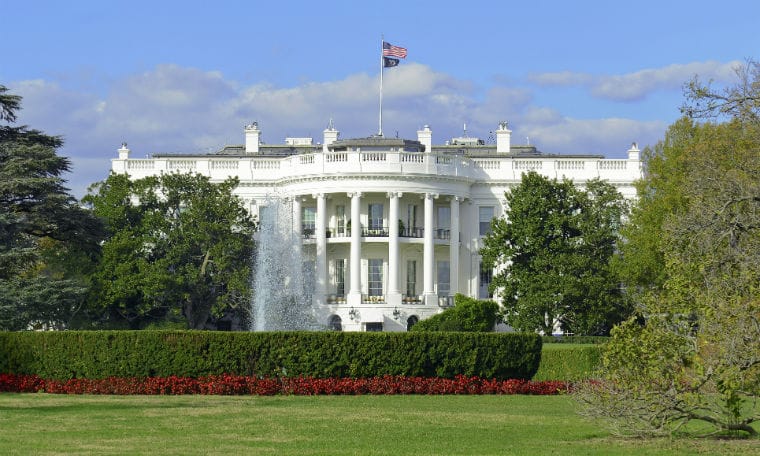Monday night saw President Donald Trump dramatically return to the White House after his three-day stay at Walter Reed Medical Center for COVID-19.
We saw Marine One land on the White House lawn, President Trump emerge and walk up the stairs to the White House, remove his mask for a photo op, enter his home with his mask still in his pocket, reemerge for a reshoot, and again enter the White House maskless.
It’s that last part I want to talk about. HuffPost asks if White House employees could lodge an OSHA complaint about the President’s COVID recklessness? I’d answer that question with a solid and resolute “thumb’s up.” The bigger question, however, is whether OSHA would do anything about it.
OSHA, the federal agency responsible for employee health and safety, presumably also regulates the health and safety of White House employees. I know of no OSHA standard that exempts them.
That said, OSHA also does not have a specific standard addressing viral pandemics. Instead, it regulates this outbreak via its general duty clause: “Each employer shall furnish to each of [its] employees employment and a place of employment which are free from recognized hazards that are causing or are likely to cause death or serious physical harm to his employees.”
It’s that “general duty clause” that could cause the White House fits if its employees take their COVID complaints to OSHA.
According to the Associated Press, Secret Service agents and White House staff are seriously pissed.
Several [Secret Service agents] who spoke with The Associated Press expressed concern over the cavalier attitude the White House has taken when it comes to masks and distancing. Colleagues, they said, are angry, but feel there’s little they can do.…
[T]hree former employees … expressed concern about the health of current workers, but were too afraid to speak publicly. Many are Black or Latino, among the demographic groups that have been more vulnerable to the virus.
Disgruntled employees are the employees most like to file a complaint with a federal agency such as OSHA. And at this moment in history, it seems like there are a large number of disgruntled employees working inside the White House.
Of course, as the HuffPost aptly points out, “Given the retributive nature of the Trump administration, any worker who wants to call in OSHA should be concerned about retaliation. Workers can file complaints anonymously to protect themselves, but those are less likely to receive a thorough investigation than ones with a name attached.” Perhaps this will be this administration’s saving grace on this issue — the fear of anyone to do anything about it. That and the fact that OSHA is not all that likely to investigate or fine its boss.
Additionally, OSHA doesn’t have the best record investigating COVID-related issues. According to former OSHA head David Michaels, “This is far and away the most significant worker safety crisis in OSHA’s history, and OSHA has failed to step up to the plate. OSHA has failed to use really any of its powers to address it . … It’s hard to take OSHA seriously.”
What hasn’t OSHA done?
- It hasn’t issued any temporary standards to address issues specific to the COVID pandemic.
- It hasn’t done anything more than issue voluntary guidance with little to no legal risk or ramifications for noncompliance.
- It hasn’t launched many investigations over COVID-related complaints—OSHA has only opened 184 investigations stemming from the 8,856 complaints it’s received related to COVID-19 (an inspection rate of less than 3 percent).
- It hasn’t levied any significant fines or penalties, unless you consider the $13,494 fine levied against Smithfield Foods stemming from one the countries worst workplace coronavirus outbreaks.
Our nation has failed its COVID-19 test in many glaring ways. OSHA is just one example. The White House’s current messaging on the ongoing pandemic is emblematic of the safety issues that many employers are handling (and handling better than the White House) on a daily basis.
Don’t act like the White House. Require masks at all times. Promote good hand-washing hygiene.
Enforce a minimum of six feet of physical distancing. Mandate isolation for COVID+ employees and quarantine for those in close contact with anyone COVID+.
Your employees are trusting you to keep them safe. Do not fail this test.











